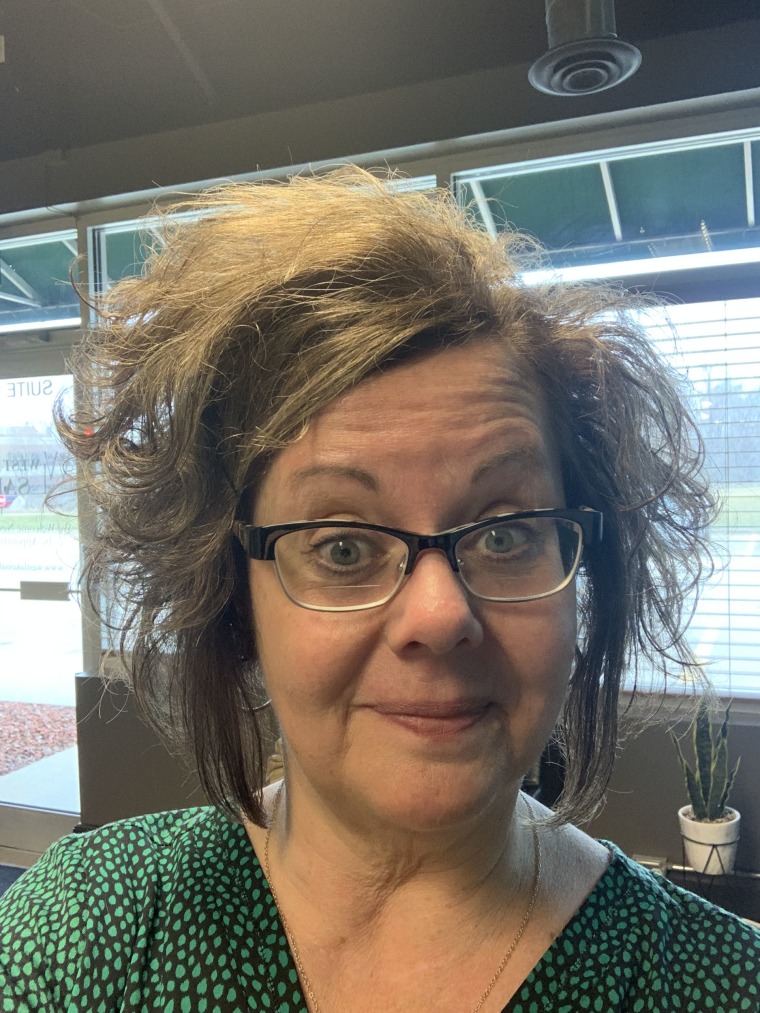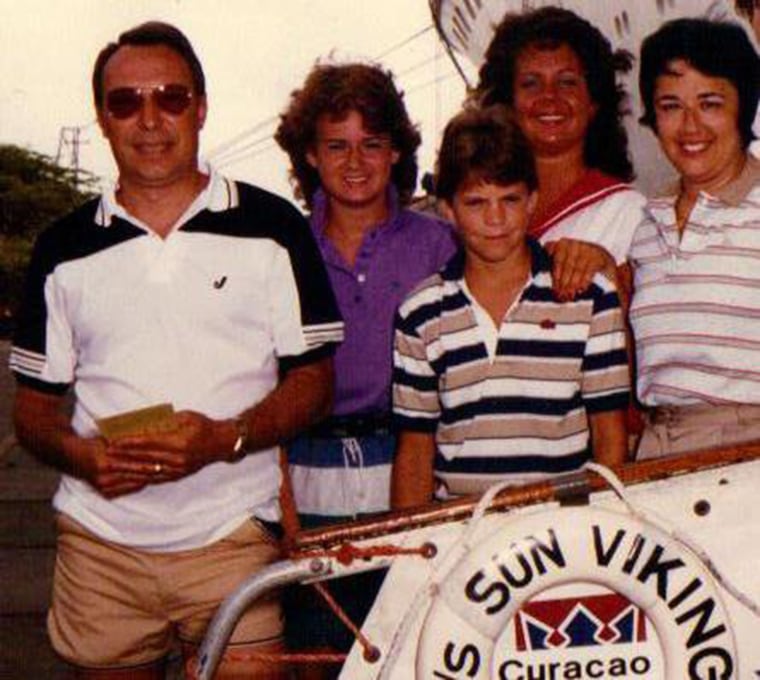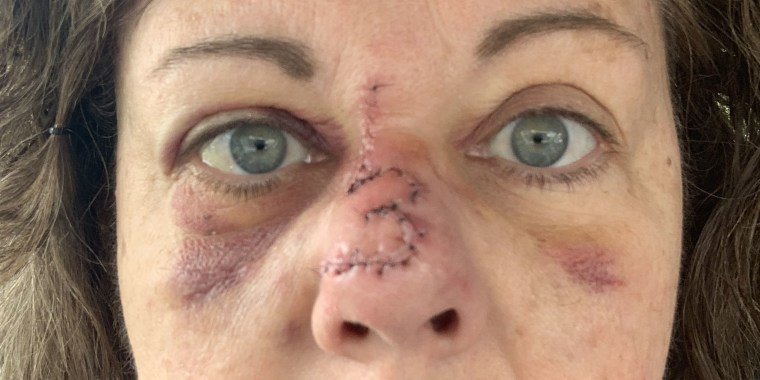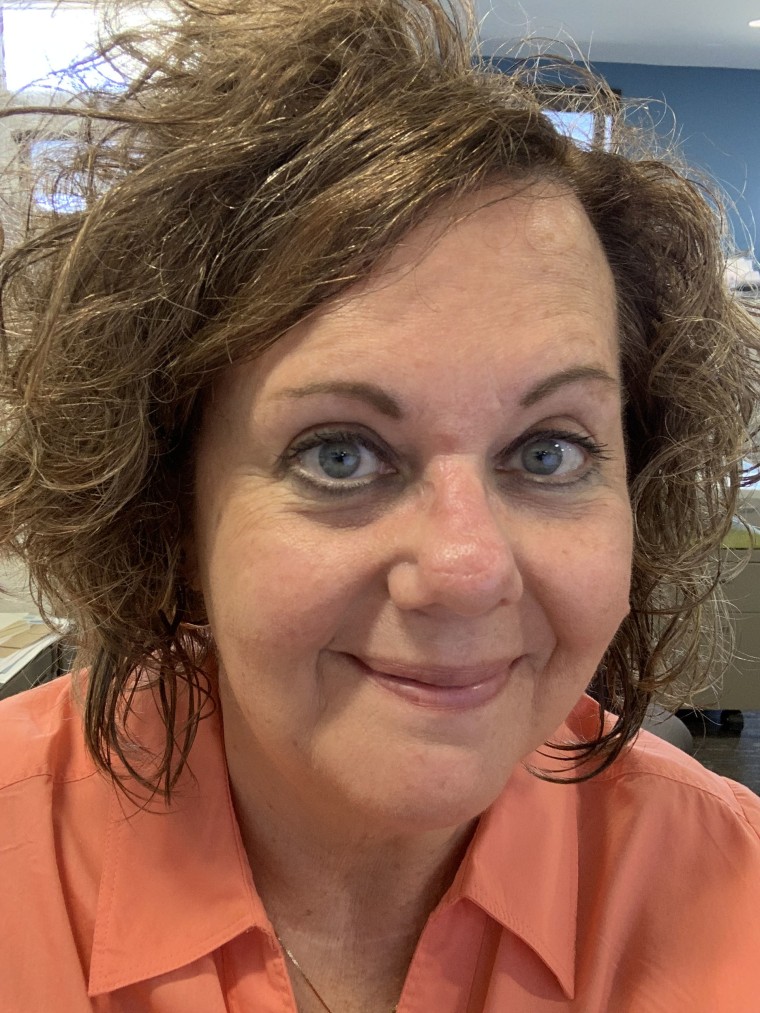In late March, Lisa Ryan visited a dermatology clinic to have a painful cyst on her back treated. After the nurse practitioner removed it, she glanced at a freckle on Ryan’s nose.
"She said, ‘I am really concerned we are looking at a melanoma,” Ryan, 56, of Des Moines, Iowa, told TODAY.

Ryan tried playing it cool, but inside she was filled with panic.
“I said, ‘Really, you are honestly concerned about that?’” Ryan recalled.
The nurse practitioner was so worried that she removed some of the freckle and sent it to be checked.
“I was freaked out,” Ryan said. “I had known people who have died of melanoma. I knew that melanoma was potentially serious.”
‘I would lay out like it was my job.’
Ryan wasn’t exactly surprised that she could have skin cancer. From the time she was 12, she and her friends slathered baby oil with a drop of iodine all over their bodies and lain on reflective blankets to get as tan as possible.
“I took great pride in the fact that I tan really well. I would lay out like it was my job,” she explained. “I never ever used sunscreen."

She also believed she needed to get burned early in the season to achieve that perfect brown hue she desired.
“The thinking was that you had to get a base sunburn,” she said. “No one knew how dangerous the sun was.”
Even in the 1980s and 1990s when the dangers of tanning became more well known, Ryan continued her obsession, even visiting tanning beds as a relaxing break from motherhood and work.
“After all the reports about skin cancer I would think, ‘Gosh, I am really lucky that I get tan and (cancer) only happens to people who burn,’” she said. “I didn’t want to think I was at risk.”

Even though she always put sunscreen on her son and daughter, she still didn't protect her own skin until she was well into her 40s.
“Any time we were outside playing they always had sunscreen on,” Ryan said. “I was not perfect, but more vigilant.”
It started as an annoying freckle.
A few years ago, Ryan noticed a new ugly freckle on the tip of her nose. She disliked how it looked and wanted to have it removed for appearance's sake, but didn't think it was cancer.
“I was really foolish about it,” she said. “It steadily grew. I was so used to seeing it when I looked in the mirror.”
An evolving or changing mole can be a symptom of melanoma, the most dangerous form of skin cancer. According to the American Academy of Dermatology, the ABCDEs of melanoma include: asymmetry, border, color, diameter and evolution. If you notice a spot that changes, itches or bleeds, you should make an appointment with a dermatologist.
Ryan believes her freckle first developed in 2015, but it could have been there longer. She first remembers seeing it in pictures from her daughter’s wedding that year.
“I had a lot of freckly, sun-spotty things. It wasn’t any different,” Ryan explained.
When the results of the biopsy returned, Ryan learned that the nurse's instinct was right: She had a stage 0 melanoma. Doctors recommended removing a larger area of her nose for clear margins with some reconstructive surgery. In early April, she underwent three surgeries on her nose to remove it and rebuild her nose.

“There’s very little chance of recurrence. I felt this odd combination of gratitude and terror. I am a fairly vigilant person when it comes to my health but the fact is that I ignored this for so long,” she said. "Once I found out it was melanoma I thought it was going to be stage 3 or 4."
While she thinks that doctors did a good job reconstructing her nose, every time she looks at her face she notices she looks different. It’s a sign of how tanning has impacted her life.
“It is a reminder every day that I had cancer,” she said. “It was a huge wake-up call.”
Ryan must visit her doctor every three months for a whole body spot check and she has already had a few pre-cancerous cells removed. She’s also at higher risk of developing other cancers since having melanoma. But she's sharing her story to encourage others to use proper sun protection.

“More than anything I hope that if people are tanning they will stop,” Ryan said. “Tanning is not safe.”
